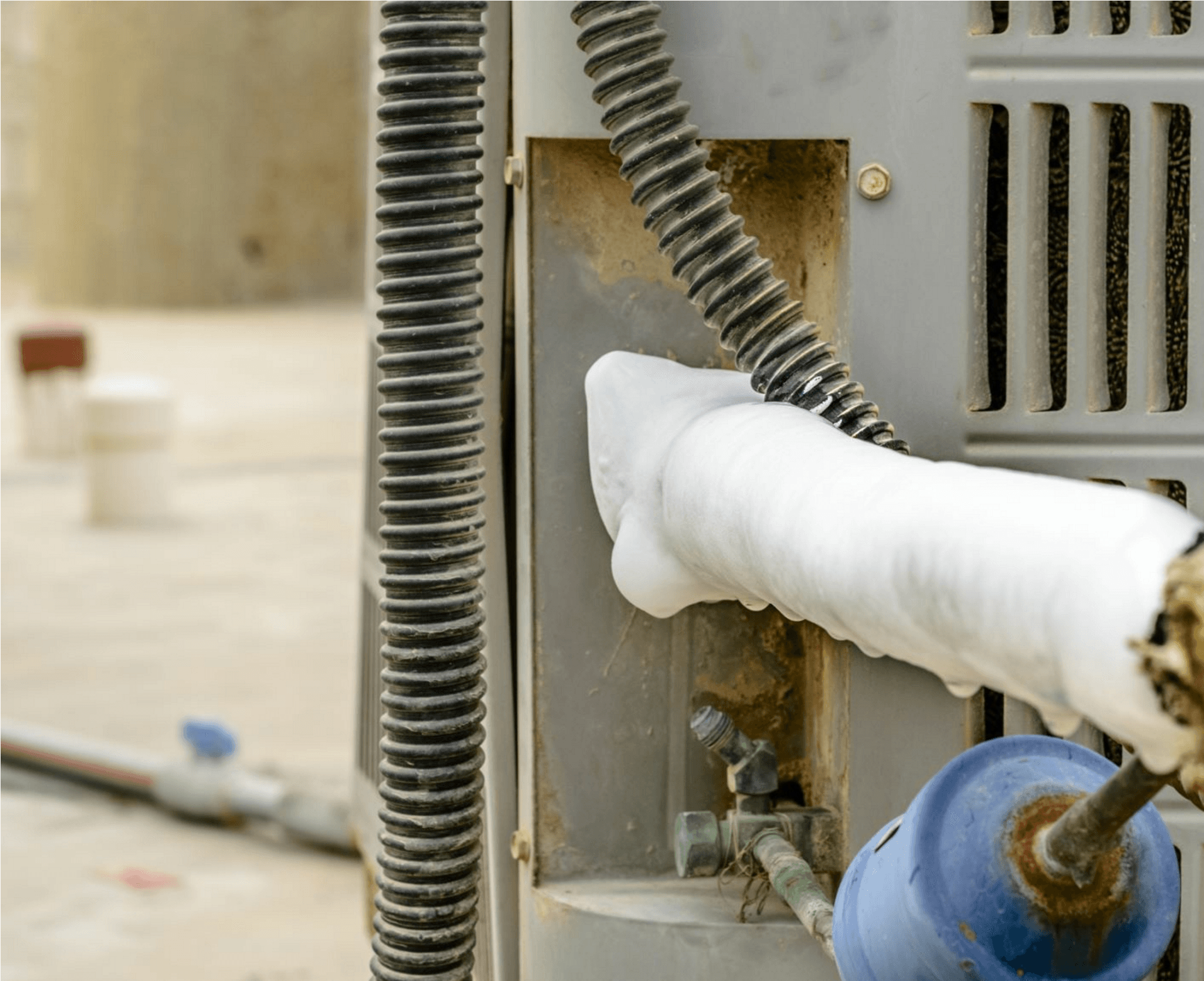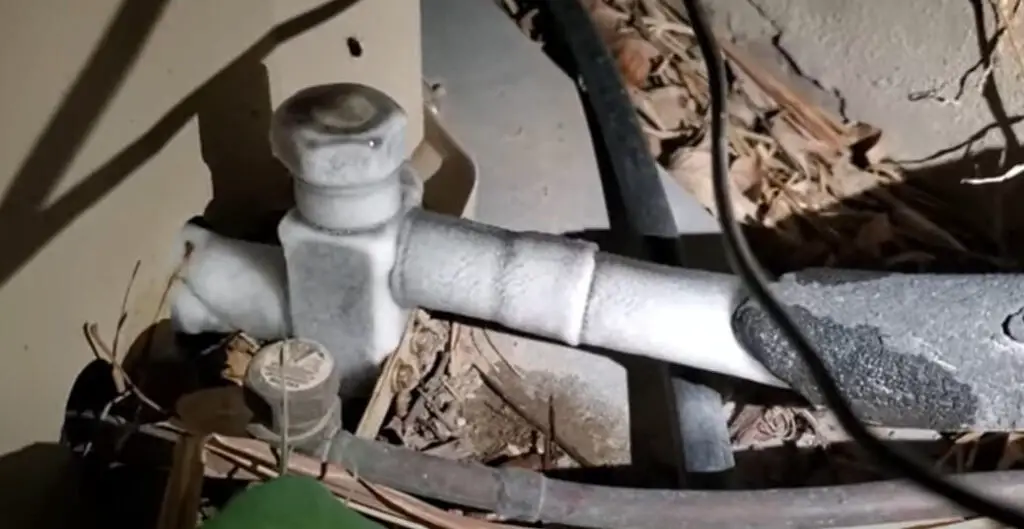Advice on Unfreezing a Frozen AC Pipe - Reinstating Proper Operation
Advice on Unfreezing a Frozen AC Pipe - Reinstating Proper Operation
Blog Article
This great article down below about What Causes AC Pipes To Freeze? is definitely motivating. Check it out for your own benefit and figure out what you think of it.

Intro
Uncovering that your air conditioner pipeline is iced up can be concerning, specifically during hot summer months when you depend on your air conditioning system the most. Recognizing what to do in such a situation is critical to avoid further damage to your air conditioning system and ensure your convenience inside your home.
Understanding the Causes
Numerous factors can add to the freezing of an air conditioner pipeline. Recognizing these reasons can assist you address the concern effectively.
Lack of Airflow
One usual cause of an icy AC pipe is inadequate air flow. When the air movement over the evaporator coil is restricted, it can create the coil to drop below freezing temperature, bring about ice formation on the pipeline.
Reduced Refrigerant Levels
Inadequate refrigerant degrees in your air conditioning system can additionally result in a frozen pipeline. Low refrigerant degrees can create the stress in the system to drop, causing the cold of moisture on the evaporator coil.
Winter Conditions
In colder environments, freezing temperatures outside can add to the cold of air conditioning pipelines. If your air conditioning device is not correctly insulated or if there are leaks in the ductwork, chilly air can infiltrate the system, triggering the pipeline to freeze.
Dirty Air Filters
Filthy or clogged up air filters can limit air flow in your AC system, bring about various concerns, consisting of a frozen pipeline. It's vital to change or clean your air filterings system routinely to make sure correct air movement and prevent ice buildup.
Indications of a Frozen Air Conditioner Pipe
Recognizing the signs of a frozen a/c pipeline is crucial for prompt activity.
Reduced Airflow
If you notice a considerable decrease in air movement from your vents, it could suggest a frozen pipeline.
Ice Buildup on the Pipe
Visible ice buildup on the cooling agent line or the evaporator coil is a clear indication of a frozen air conditioner pipeline.
Odd Sounds from the Unit
Uncommon sounds, such as hissing or bubbling, originating from your a/c unit can signify that there's ice present on the pipeline.
Immediate Actions to Take
When faced with a frozen air conditioner pipeline, it's vital to act swiftly to stop further damages to your air conditioning system.
Switching off the a/c
The very first step is to switch off your air conditioning unit to stop the system from running and exacerbating the concern.
Checking for Blockages
Examine the area around the indoor device for any kind of obstructions that may be obstructing air movement, such as furnishings or drapes.
Defrosting the Pipe
You can use mild methods like placing towels taken in warm water around the frozen pipe to assist thaw it gradually.
Preventive Measures
Taking safety nets can help prevent future occurrences of a frozen air conditioner pipeline.
Regular Maintenance Checks
Schedule routine upkeep get in touch with a professional HVAC service technician to make sure that your AC system is running successfully.
Transforming Air Filters
On a regular basis replace or clean your air filters to avoid air movement limitations and preserve optimal performance.
Insulating Exposed Pipes
If your air conditioner pipes are subjected to cold temperature levels, think about shielding them to stop cold throughout winter months.
Looking For Professional Help
If DIY approaches fail to settle the problem or if you're unclear concerning how to continue, it's finest to look for support from a qualified HVAC service technician.
When DIY Methods Fail
If your attempts to thaw the pipeline or address various other problems are unsuccessful, it's time to contact a professional.
Importance of Hiring a Professional HVAC Technician
A licensed HVAC professional has the know-how and tools needed to identify and repair concerns with your AC system securely and efficiently.
Verdict
Handling an icy air conditioning pipe can be a frustrating experience, however recognizing how to respond can aid minimize damage and restore comfort to your home. By recognizing the reasons, recognizing the indications, and taking timely activity, you can effectively attend to the concern and prevent future incidents.
What to Do If Your AC Line Is Frozen
Make Sure All Supply and Return Air Vents Are Open
If you notice problems with airflow, the first thing you should do is check your supply and return vents. Supply vents distribute clean, conditioned air throughout your home. As this air becomes stale, it’s pulled into the return vent, where it’s reconditioned before being sent back out through the supply vent.
When these vents are closed, air won’t flow in the home. Before examining your AC, check the vents in every room and ensure they’re all open.
Check for a Dirty Air Filter
Another possible cause of limited airflow is a dirty air filter. Your air conditioner’s filters catch elements you don’t want to breathe in, such as dirt and dust. Over time, filters can become clogged, ultimately blocking air from flowing in and out. The lack of airflow can then cause the entire coil to freeze and will completely restrict any air from moving through it. The AC may need to be powered off for one to two days to allow the coil to thaw after replacing the filter to allow proper functioning of the unit. This debris can also accumulate on your AC’s evaporator coil, requiring a more serious repair. In general, air filters should be cleaned regularly (about every two weeks).
Assess Your Outdoor Unit
In addition to checking your AC, assessing the outdoor unit is a good idea. Also known as the condensing unit, it works with your interior unit to release heat outside. An issue with the outdoor unit can result in rising internal temperatures.
Overgrown Shrubs or Clogged Leaves
From leaves and twigs to shrubs and debris, there’s no shortage of outdoor elements that can accumulate around your condensing unit. When these elements get lodged inside the unit, they can block airflow. Fortunately, removing the blockage can solve the problem.
Sounds of a Broken Fan
Shrubs and leaves aren’t the only things that can impede your outdoor unit’s airflow. If the fan is broken, the unit won’t be able to properly get rid of heat — which means the internal temperature won’t go down. First, make sure the fan is spinning. If it is, check for the following sounds of a broken fan:
Buzzing Rattling Screeching Hissing Clicking Preventative Measures
Nobody wants to deal with a frozen AC line. In addition to causing problems with your air conditioner, they require professional repairs. On the bright side, there are preventative measures you can take to help ensure this issue doesn’t arise in the first place.
https://www.coopergreenteam.com/blog/what-to-do-if-ac-line-frozen

I discovered that piece on Have a Frozen AC Line? Here’s How to Fix It while doing a lookup on the internet. Are you aware of another person who is very much interested in the subject? Be sure share it. We value reading our article about Have a Frozen AC Line? Here’s How to Fix It.
Rates Report this page